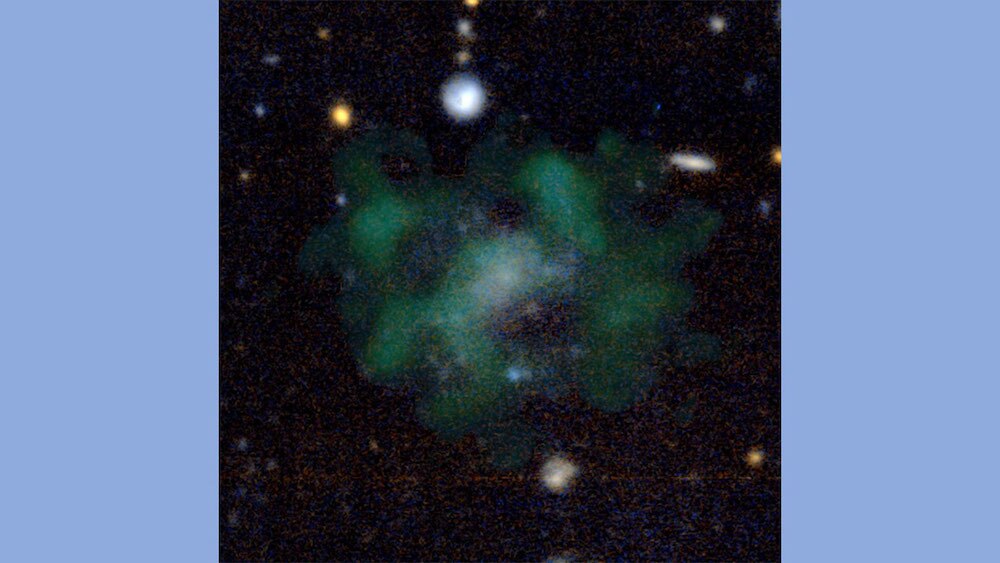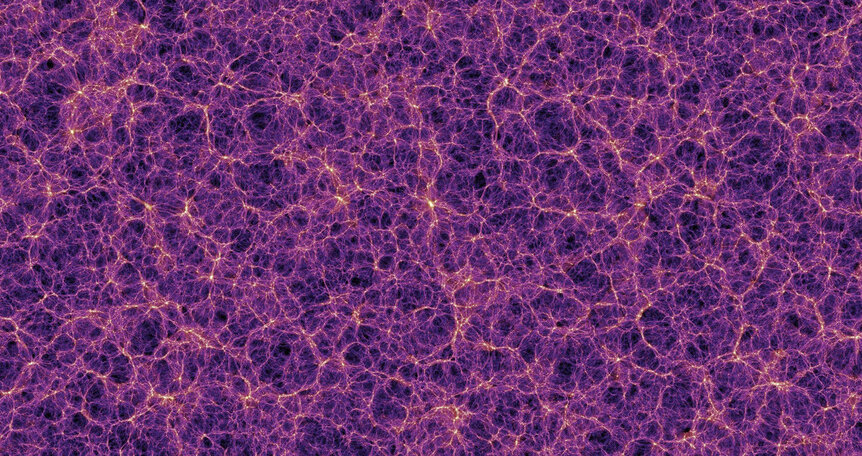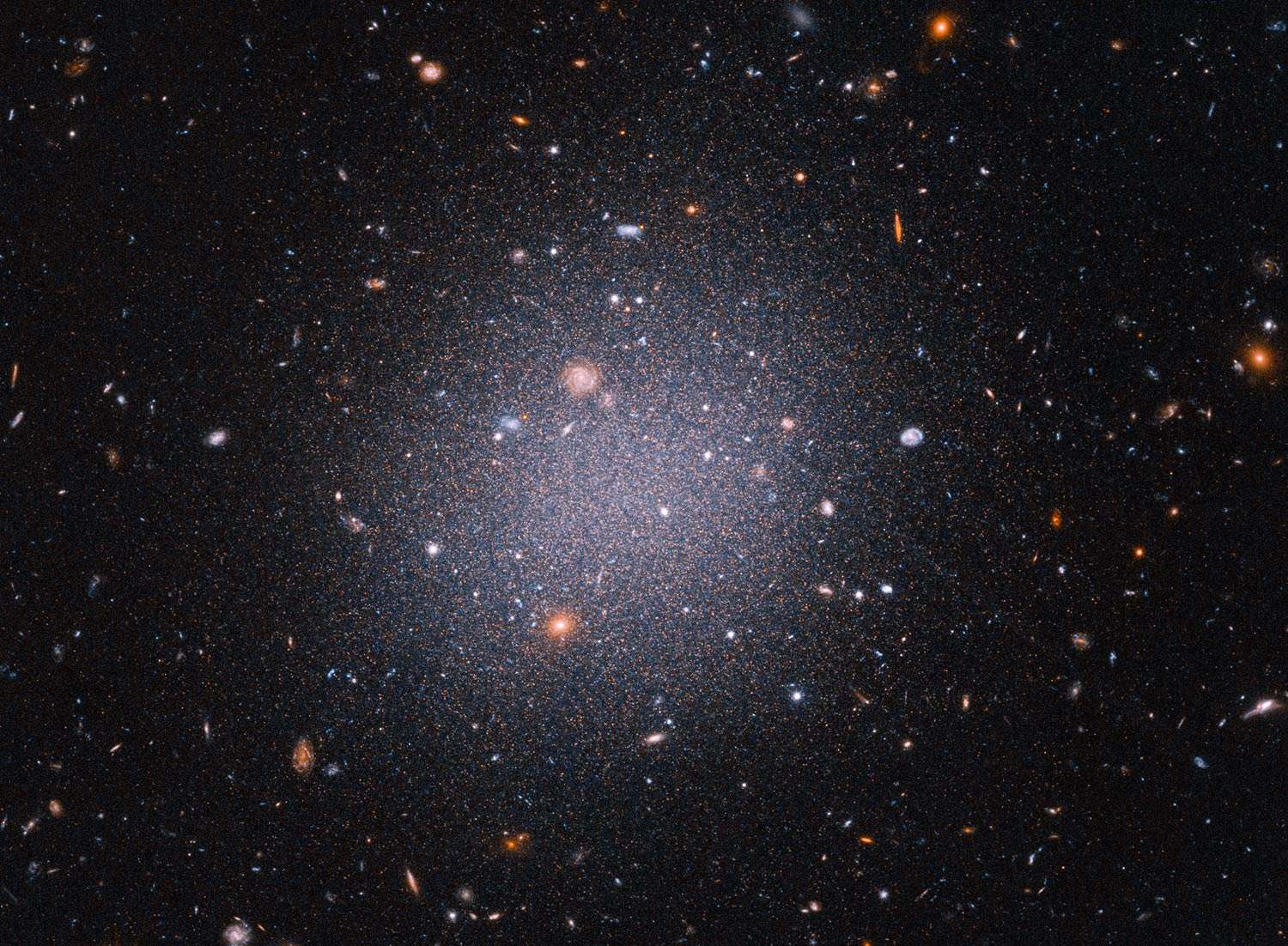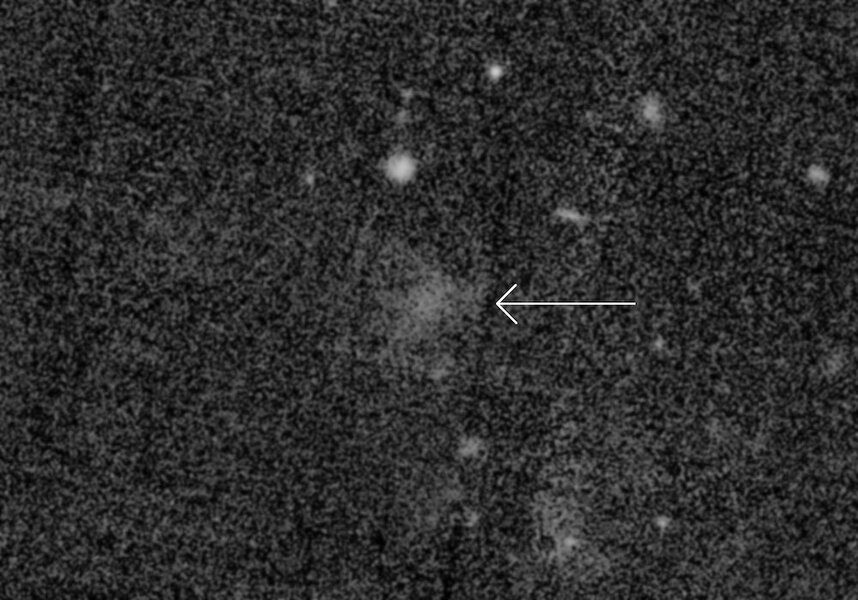Create a free profile to get unlimited access to exclusive videos, sweepstakes, and more!
Non-baryonic mystery: Where is this galaxy's dark matter?
A faint diffuse galaxy is missing its dark matter.

Speaking of dark matter, astronomers have uncovered a pretty interesting mystery involving it. Or rather, not involving it: They’ve found a galaxy that apparently has little or no dark matter in it.
That’s not entirely unexpected, but given the specifics of this galaxy, it’s certainly weird.
The idea of dark matter has been around for a long time, and it’s linked to a galaxy’s mass. There are a couple of decent ways to measure a galaxy’s mass. One is to look at how much light it gives off, and get the mass assuming that light is from stars and gas. Another is to measure how rapidly the stars and gas are revolving around the galaxy’s center; that depends on the mass of the galaxy as well.
One might assume those two numbers would be close. What astronomers found, though, is that they very much weren’t. The mass found using the emitted light was far lower than the mass found using the velocities (called the dynamical mass), and by a lot. After quite a bit of measurements and arguing, astronomers have concluded that up to 85% of the mass of a galaxy is made up of a kind of matter that doesn’t emit or reflect light, and doesn’t interact with normal matter. Hence dark matter.
We don’t know what dark matter is made of, or even if it’s made up of all one thing. But we do know it plays a huge role in how galaxies form, how they behave, and even how the structure of the universe itself formed.
To be clear, that 85% number is an overall average. Some galaxies have been found to have a lot more dark matter than “normal” matter — matter that makes up you and me and planets and stars; protons and electrons and such, what’s called baryonic matter. That can happen because normal matter can interact with itself, exert gas pressure, or get pushed around by the pressure of light. So really massive, bright stars can blow normal matter out of a small galaxy (one with not as much gravity), or stars can explode and blast gas out of the galaxy as well. That leaves less normal matter, so the ratio of dark to normal matter goes way up.
But what about galaxies with very little dark matter?
Those are more difficult. It’s possible that some smaller galaxies can have their dark matter stripped away from them if they happen to be near a much bigger galaxy. Such is the case for the big galaxy NGC 1052, which has a lot of smaller galaxies near it. Two of them, DF-2 and DF-4, both appear to have a lot less dark matter than usual. They’re both dwarf ultra-diffuse galaxies — literally small galaxies that are much larger, spread out far more, than most galaxies with their mass. It’s likely that when they formed, NGC 1052 took away most of their dark matter via its far larger gravity, leaving them without much of their own.
Then there’s AGC 114905.
In 2019, astronomers announced (link to paper) they had found a half-dozen ultra-diffuse galaxies that appeared to have very little dark matter in them. They had measured the rotation of these galaxies, and the masses they found matched pretty well with the mass found using their brightness. That means they don’t have much dark matter.
However, the measurements were fairly low-resolution, and while interesting the conclusions couldn’t be certain. So they turned to AGC 114905, an ultra-diffuse galaxy located about 250 million light years from Earth. That’s pretty far away so it’s faint, but it’s still possible to measure its light-emitting mass. They find it has a stellar mass of about 130 million times that of the Sun — our Milky Way is more like a hundred billion solar masses of stars, so AGC 114905 is a lightweight. It’s also very roughly 20,000 light years across — the Milky Way is 120,000 light years wide — so it really does earn its ultra-diffuse moniker.
The astronomers re-observed AGC 114905, staring at it for 40 hours with the Very Large Array in New Mexico. These radio observations were much higher resolution and traced cold hydrogen gas in the galaxy. They measured the total mass of this gas to be pretty high, about a billion times that of the Sun. Accounting for the usual fraction of helium (which is difficult to observe directly), they find the total baryonic mass of AGC 114905 to be about 1.4 billion times the Sun’s.
The gas appears to be in a rotating disk, and they could measure the Doppler shift of the gas, which gives its velocity. From that they could derive a dynamical mass, and what they found is that it’s essentially the same as the mass found using the galaxy’s light. They fiddled with some of the usual dark matter models, but none fit the measurements except when they changed some parameters by “unfeasible” amounts. In other words, it doesn’t seem to have any (or at best very little) dark matter.
And that’s weird. AGC 114905 is not near any big galaxy that might’ve stripped off its dark matter. So what happened?
Yeah, well, that’s not clear. One major uncertainty is the observing angle on the galaxy; that is, do we see it face-on, edge-on, or somewhere in between? That changes the actual rotation speed of the gas — there’s a trigonometric dependence on the inclination angle of the true velocity versus that measured. They find it’s tipped by about 32° (so a bit closer to face-on). They find a few ways to measure that and seem confident that’s the actual value. Looking at the image I’m a little skeptical; it’s so faint that the angle is really hard to see by eye (compared to, for example, the Andromeda galaxy which we see at more like a 75° angle and is obviously foreshortened). So maaaaaybe this is throwing things off.
However, they do plan on observing the other 5 galaxies they found that appear to lack dark matter, and those all have different inclinations to us. If they find that they too lack dark matter, then we do have a bona fide mystery here.
I want to note that if that’s the case, it’s still unlikely to cause astronomers to throw away the idea of dark matter altogether. There are a plethora of independent observations showing us its reality, and it does such a good job explaining so many things we see that its reality isn’t really in doubt. Instead, this would mean these galaxies formed differently, or underwent some sort of evolution over time that caused them to lose their dark matter (or, more generally speaking, to have their normal and dark matter go separate ways).
It’s far more likely — as we have seen over and over again in astronomy as well as many other fields of science — that nature is subtle, and capable of great complexity. Our ideas can be correct in general but still fail in some special cases where conditions are different. We need to observe the Universe ever more carefully to find out what those conditions are.






























